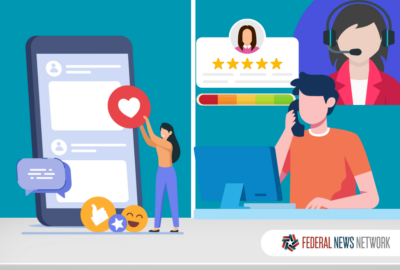Couples-only health plan? Good idea or bad idea?
What do you think about a couples-only federal health plan? Would that be fair to the group plan and its group rates? The addition of a self-plus-one health plan...
One of the big surprises to come out of the Ryan-Murray (or Murray-Ryan) budget comprise was the OK to set up a couples-only health plan as part of the Federal Employees Health Benefits program.
The FEHBP, which covers nearly 9 million workers, spouses, retirees and survivors now has only two options: Self-only which covers a single person and a family plan .
Under the FEHBP, a family is two or more people. You pay the same premium whether your family is two people or 20. Many people (most of them couples) think this is unfair. They can purchase two self-only plans at a lower total premium than the family plan. Some do that. The problem is that if they both have super-high medical bills, they each must satisfy a deductible that, combined, is much higher than the family plan’s deductible.
Backers of the two-plan program point to the fact that it is a group plan with group rates based on a large pool. That includes the so-called “young immortals” who rarely use their health insurance. They “subsidize” older workers and retirees who have much, much higher medical and drug costs. By the same token, older people — long past their child-bearing or child rearing years — believe they subsidize young families with their frequent medical costs. Couples, whether traditional or same-sex, feel they are subsidizing everybody.
Although it’s a group plan — with group rates — many people like the rate part, but want the group plan tailored to their special needs, health, lifestyles and family status.
Most of the people who have been heard from on the subject support the self-plus-one idea. But there is growing opposition to it.
Walton Francis, a leading expert on the FEHBP says a couples-only plans is not a good idea. He edits the Consumers’ Checkbook Guide to Federal Health Plans, which many workers and retirees consider the Bible of open season.
Francis rarely pulls any punches:
“Enacting this thing was nuts,” he said. ” It may be something that will be ‘scored’ as saving money artificially … but it cannot actually save real money.”
He added, “If the option is offered and does not in fact provide a significantly better deal for self-plus one, then no one will enroll and it will have saved zero, even artificially.”
Regardless of whether the couples plan is adopted or not, Francis said, “The same people will be incurring the same medical expenses. It cannot possibly save the government money unless it costs enrollees more. It cannot possibly save enrollees money unless it costs the government more. So any alleged ‘savings’ to the government will necessarily be at the expense of other enrollees — larger families, or retired couples who pay more in premiums. In other words, the emperor has no clothes. What is incomprehensible is why it was enacted.”
Today at 10 a.m. on our Your Turn radio show we’ll talk with Jacqueline Simon about the self-plus one plan. She’s Public Policy Director of the American Federation of Government Employees. AFGE opposes the Senate-House budget compromise in part because it authorizes the new health insurance option. Later in the show, we’ll get a rundown from Federal Times writers Sean O’Reilly and Andy Medici on what feds and retirees can expect in the new year.
Listen if you can (1500 AM or online), and if you have questions email them to me at mcausey@federalnewsradio.com or call in during the show at (202) 465-3080. The show will be archived here.
NEARLY USELESS FACTOID
Compiled by Jack Moore
No more hugs — free or otherwise. At least not from the Madison, Wis.-based “Snuggle House.” The business, which purported to offer $60-an-hour “therapeutic cuddling” sessions, closed down last weekend after just three weeks in business.
(Source: UPI Odd News)
MORE FROM FEDERAL NEWS RADIO
Pay gap between federal employees, private-sector workers continues to grow
The gap in pay between federal employees and private-sector workers widened slightly this year, according to data presented at the annual meeting of the Federal Salary Council. On average, federal employees earn 35.37 percent less than their private-sector counterpart, according to data from the Office of Personnel Management and the Labor Department’s Bureau of Labor Statistics.
Best Places to Work rankings show repeat winners and all-time lows
For the third consecutive year, NASA, FDIC and the Surface Transportation Board scored highest in their respective categories. But 2013 marks the all-time lowest employee satisfaction scores overall, according to the annual Best Places to Work report from the Partnership for Public Service and Deloitte. Governmentwide numbers show the federal workforce is most concerned with leadership, mission and pay.
Kathryn Medina to step down from CHCO Council post
Medina’s last day at the Office of Personnel Management will be Jan. 3. She is leaving to join public relations firm APCO Worldwide as a senior human resources executive.
Copyright © 2025 Federal News Network. All rights reserved. This website is not intended for users located within the European Economic Area.
Mike Causey is senior correspondent for Federal News Network and writes his daily Federal Report column on federal employees’ pay, benefits and retirement.
Follow @mcauseyWFED






